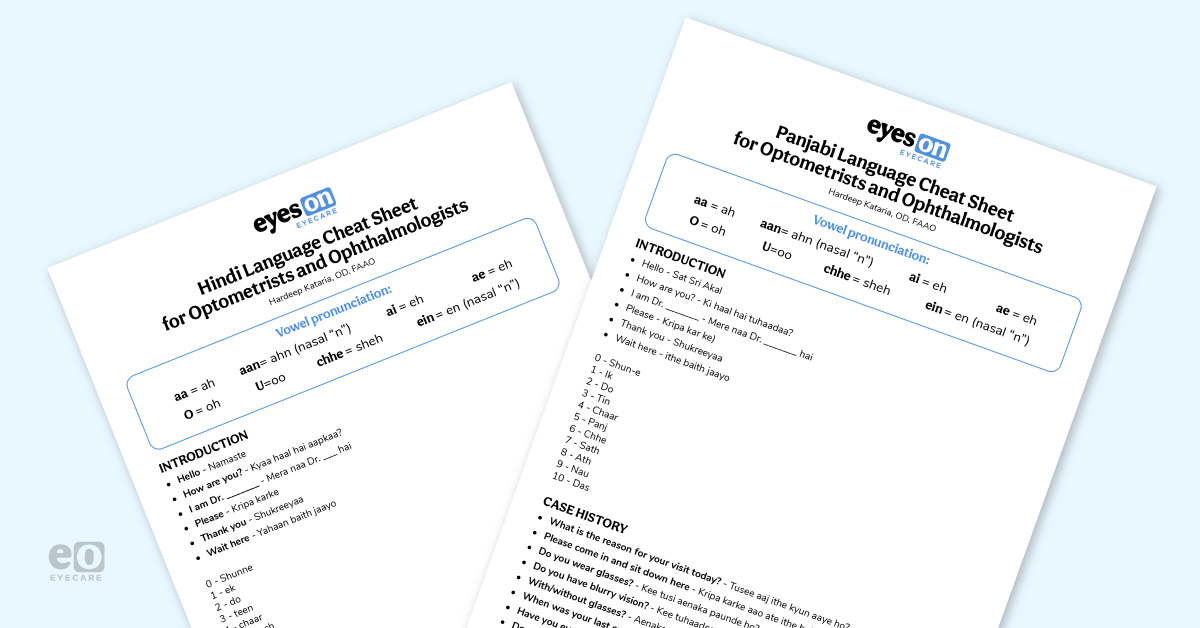Effective communication is a fundamental component of every patient interaction. Being able to communicate eye-related findings in your native language is invaluable in establishing and maintaining the doctor-patient relationship. As a result, you might even find other patient referrals from the community coming your way!
Often, those of us who have grown up speaking Panjabi and Hindi colloquially are at a loss for eye-specific vocabulary, as we may not use it often in a casual setting. This cheat sheet will provide translation and pronunciation of the most commonly used vocabulary and phrases during an eye exam.
This is not an exhaustive list and only represents one manner in which we can phrase a sentence. This cheat sheet will help you build on your linguistic skills and set a strong foundation with your Panjabi/Hindi speaking patient.
Watch along with Dr. Kataria for tips on pronunciation!
This cheat sheet includes phrases and pronunciation guides for:
- Introducing yourself
- Taking patient history
- Entrance testing, the eye exam, and the fundoscopic exam
- Talking your patient through their assessment and treatment plan
- And more!
📚
Download the Hindi & Panjabi Language Cheat Sheets!
Don't forget to watch the pronunciation guides for tips!
Why learn optometric phrases in Hindi and Panjabi?
We've covered before the importance of
communicating with your patients in their primary language. Ultimately, the biggest reason is this: A little respect goes a long way. Even if you don't use Panjabi or Hindi to conduct the entire eye exam, putting in a little effort to use some key phrases is a great way to help your patient be more comfortable in the exam chair—and a comfortable patient is a patient who is more likely to trust you and your recommendations!
If you're not a fluent speaker and you’re looking to practice your basic language skills, try apps like
Duolingo. Another great tool for ODs is the
OpTranslate app, which breaks down each part of the eye exam, providing thorough translations for common phrases, questions, and answers that you're likely to encounter.
With a few small additions to your vocabulary, you will be surprised by how quickly your eye exams begin to flow more smoothly. Despite the many different
ways we can use technology to interpret for us, having a basic understanding of the language will save you time and optimize your exam flow. Learning to enhance your communication skills, and ascend beyond the bare minimum vocabulary will help you thrive among your Hindi- and Panjabi-speaking patient population.
